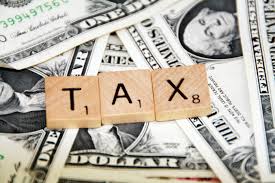
Because I have written many articles in these pages about lowering one’s taxes, I am often asked this reasonable question: “I have only one job and an uncomplicated financial situation. Can’t I do my taxes myself using good old Turbo-Tax?”
Yes, you can, but even those with simple returns can save money by using a tax strategy called “bunching.” Imagine a single young woman who works as a nurse and earns $55,000 a year. She does not own a house and therefore cannot claim a deduction for a mortgage. Should she itemize her deductions or claim the “standard deduction”?
A little background: There are two kinds of tax deductions: “above the line” and “below the line.” This line has a name; it is called “adjusted gross income.” The deductions above the AGI are allowed so long as you paid them. The most common of these is putting money in pensions and IRAs.
The deductions below the line are called “itemized deductions.” These include mortgage interest, real estate taxes, charity, state income taxes, and, sometimes, medical expenses. Now here is the catch: You get to claim some below-the-line deductions whether you actually paid them or not! Everyone can claim $6,300 even if she has not spent a single dollar on any of these. This imaginary tax deduction is called the “standard deduction.” Note: If your actual expenses for these categories come to more than $6,300, you may “itemize” and claim the higher amount.
Let us say that our nurse spent $3,000 on state income tax and another $3,000 on charity. Since this adds up to $6,000, it does not pay to itemize her deductions. She should simply claim the standard deduction of $6,300. This means that she got no tax savings from her charity. If she upped her charity to $4,000, however, she would itemize and claim $7,000, since this is higher than $6,300. Now she is getting a benefit from her charity, but the benefit is very small. She is really only benefiting from $700 of the $4,000 in charity, since that is the amount by which she has exceeded the standard of $6,300 that she could have deducted automatically.
It is this dilemma that created bunching, and here is how it works: You arrange your charitable giving so that you can itemize every other year and get the greater benefit. This means that, one year you give double charity, and the next year you give none. Our nurse, for example, would claim the standard of $6,300 this year, and claim $11,000 the next year ($3,000 state taxes plus $8,000 charity). Her savings every other year are now much greater than when she gave her charity each year.
Wait! There’s more: You can also double your state taxes every year. Let’s say you decide to bunch in 2016. A person earning $55,000 would owe $3,908 in Maryland state taxes. At the end of December 2016, she pays an extra $4,000 in charity, pays the $3,908 state taxes, and mails the State of Maryland a check for an additional $3,908 – for 2017 income taxes. This may be done with a simple coupon that is used for people who make estimated tax payments.
Now we have a whole new picture: For 2016, Miss Nurse will claim deductions of $3,908+$3,908+$4,000+$4,000, which equals $15,816. The following year, she will simply take the standard deduction. This will save her over $1,500 every other year, or $750 per year. A married couple earning $100,000 can save over $1,200 per year playing this game. (Note: When you prepay your income taxes, you need to tell your employer to stop withholding income taxes, since the taxes will have already been paid in full. This is done with a form MW507.)
Let me address some of your questions:
Q: Is this legal?
A: Yes. You are allowed to give charity whenever you feel like it. And the government has penalties for paying taxes late, but paying taxes early is certainly legal.
Q: Does this mean I will give no charity in for 2017? That does not feel right.
A: You can give money to organizations at the end of 2016 with instructions. For example, you could give Ahavas Yisrael $1,000 and request that it be allocated to various causes in 2017: e.g., 500 for (matanos la’evyonim and 500 for maos chitim, etc.). In addition, you can purchase Agudah scrip at the end of year one and distribute it in year two.
Q: How does the state know what to do with my money when I mail them this big check?
A: You send the check with form 502D 2017. This tells them how to apply it.
Q: Can everyone do this?
A: Homeowners have to pay their mortgage each month and prepaying does not work for several reasons. Therefore, this strategy generally works only for people not paying a mortgage.
Q: Aren’t you losing investment income by paying taxes early?
A: That is a valid point with regard to state taxes. But realize that your early payment of $4,000 is earning a return on investment of 50% per annum tax-free on a sure bet.
Q: What else can you prepay?
A: I have seen people prepay real estate taxes a year early. In addition, using this strategy for medical expenses can offer profound savings due to the high “floor” for medical expenses. (The math is too complicated for this article.)
Conclusion: Even in a seemingly simple situation, there is much to do to reduce your tax liability.
Eli Pollock CPA can be reached at elipollock2@yahoo.com






